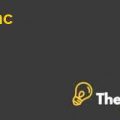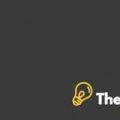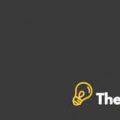
Roche's acquisition of Genentech Case Solution
SWOT analysis:
Strengths: Both companies focus on innovation and developing better solutions and medicines for patients. Therefore, the integration would lead to development of a new biotechnology industry, which will provide facilities and fulfill the needs of patients by establishing innovation driven business.
Weaknesses: After merging, it would be difficult for each company due to different business approaches to measure performance since Roche is focuses more on marketing and commercialization of the products.On the other hand, Genentech focuses on the research and development.
Opportunities: The synergy would result in establishment of unified work culture that would collect people from numerous divisions and would ultimately increase the value of the company within pharmaceutical industry.
Threats: Roche and Genentech were rivals before the integration offer. This change might result in failure of merger due to cultural differences and collaboration.
Porters 5 Forces:
- Threat of new entrants: The competition for biotechnological startups is increasing since 1994 and more than 1400 new companies have been introduced, they collectively have a revenue of $ 54 billion.
- Threat of substitutes: In this biotechnological industry, major substitute are generic drugs and they hold more than 70% sales in the pharmaceutical market. Along with this, they create a threat of substitutes due to low cost for switching products.
- Power of Buyers: The development of biotechnology drugs results in high quality medicines and solutions, which increase the demand at some reasonable price from patients.
- Power of suppliers: There is no need for negotiating with suppliers because in pharmaceutical industry, all the companies set their market price with their control of research, development, and manufacturers of the medicines.
- Existing competitors: Since companies are getting bigger, they are increasing competition, which is unmanageable. Therefore, the merger and acquisition is a good idea for decreasing competition.
Strategic rationale for Roche acquiring the 44% of Genentech:
Roche was majority shareholder of Genentech who owned 56% of shares and further plans to invest in 44% of shares, in order to merge the two companies in the pharmaceutical industry. The strategic rationale is to develop innovative products, which would lead to growth of the industry through mergers and acquisition. Therefore, Roche decided to form horizontal integration and achieve Genentech’s potential market since it provides the benefits of successful synergies and ensures growth while reducing risk. Along with this, it results in competitive strengths for other companies, if synergy is paid less than the premium price.
Likelihood of the proposed synergies for Genentech:
Since Genentech is a minority shareholder, it would be difficult for Roche to develop good relations with the workers. Roche should elucidate the benefits of merger by showing them a positive impact to company and for employees. This could be possible by eliminating the fear by offering security in jobs and authority to make decisions.
Role of special committee have in evaluating the proposal from Roche:
The board of management responded to 89 per share offer by Roche. Three independent directors were present in a special committee and they rejected the offer and in November. they waited for $112 to $115 per share offer. Along with this, Genentech hired Goldman Sachs and Latham & Watkins as advisors who helped in retaining employees and severance plan to which Roche agreed, but committee refused $ 89 per share, as it was considered undervalued..........................
This is just a sample partial case solution. Please place the order on the website to order your own originally done case solution.













